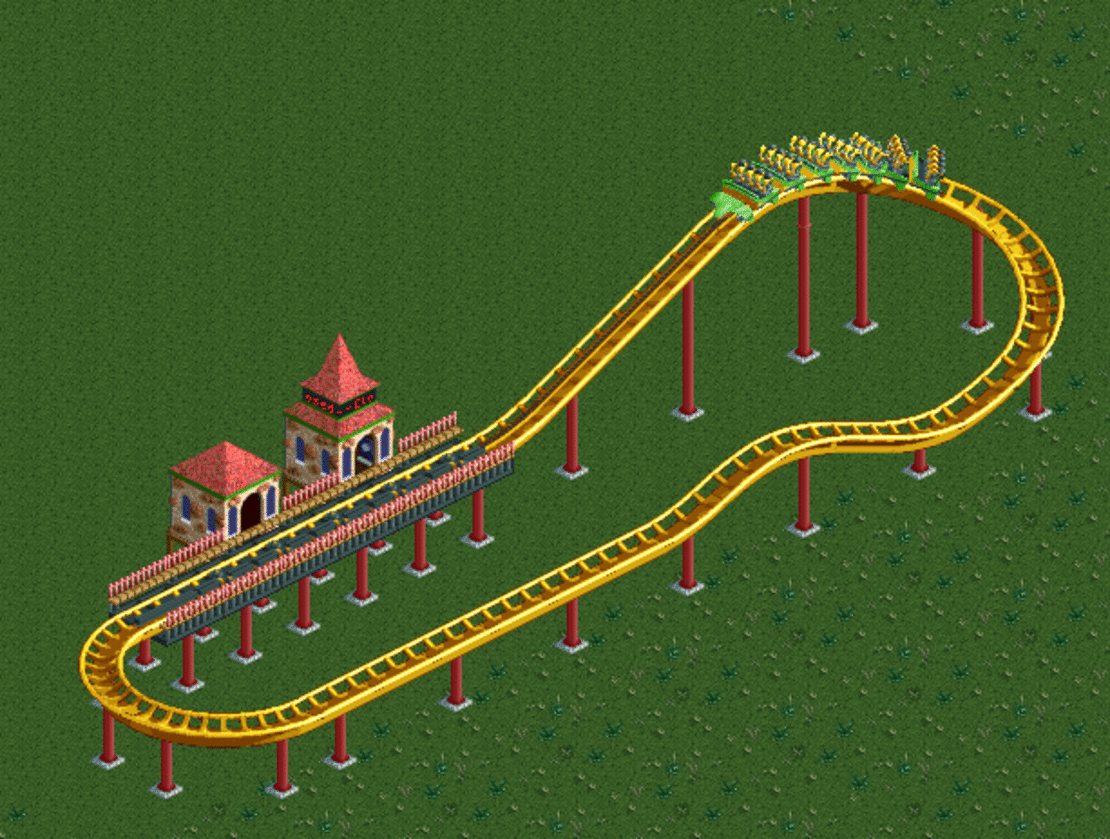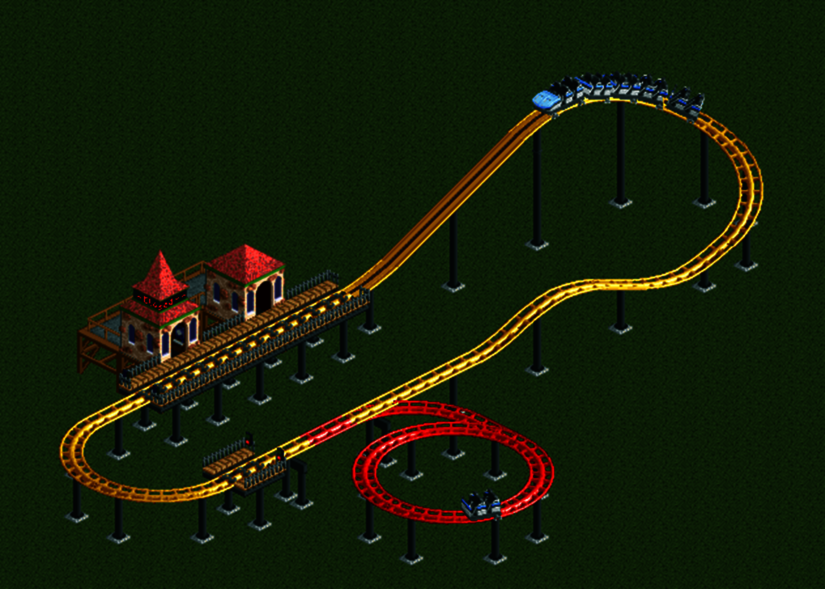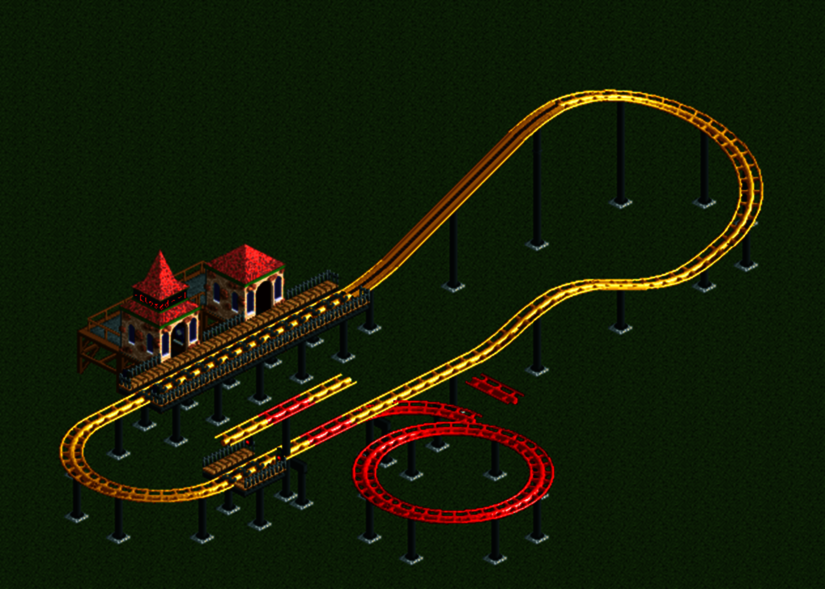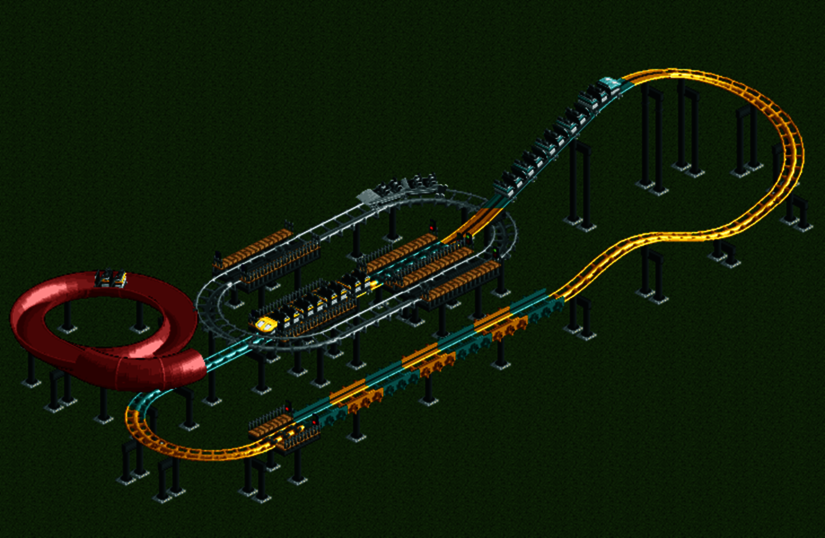
Mekkit University 045 Backward Running Coasters
Hey everyone!
In RollerCoaster Tycoon you can make all or just some trains on a roller coaster run backwards with the methods shown in this tutorial.
Making roller coaster trains go backwards
written by Thingsontracks
General
This tutorial requires a recent version of Basssiiie’s RideVehicleEditor plugin, which can be found at
openrct2plugins.org/plugin/MDEwOlJlcG9zaXRvcnkzMTI2MjQ1MjY=/OpenRCT2-RideVehicleEditor
Full circuit backwards rollercoaster
- Build the whole roller coaster in reverse. If there is a section of flat track between the station and the lift hill that is longer than the train, you cannot use chain lifts on any flat track piece there.
- Use the tile inspector to copy the front tile of the station and place it further than a train’s length in front of the real station. If you copy the station tile elsewhere in the layout, a rare brake failure at the wrong time can get the coaster train stuck.
- Build a track loop that can trap a coaster car going in circles. You can use track pieces not available for the roller coaster like covered dinghy slide track pieces to easily make the loop part invisible.
- Use the tile inspector to move all the track pieces to the right layer (top or bottom) as shown in the exploded view and make the station piece invisible.
- Set the coaster to "Reverse-Incline launched shuttle mode" and open/test it.
- Use the RideVehicleEditor to move the back car of the coaster train onto the track loop with the track progress variable. Change it to an invisible vehicle like reverser car variant 0. Also adjust the mass and seats to 0.
- To get stats ratings, remove all of the loop track pieces that are on the same tiles as the roller coaster. Change the lift hill speed to restart stats calculation. Sometimes it is required to close the roller coaster and change the lift hill speed while the train is stopped in the station. Reopening then should lead to calculated ratings.


[Note: You can simulate the ride instead of opening it in step 5. The RideVehicleEditor can modify the simulated train so you can keep constructing while the back car stays separated on the trap loop.]
[Note: You can run multiple trains, but they can end up glitching into each other in the station. Set a minimum waiting time and open the ride to avoid both trains departing at once. To avoid trains getting stuck in case of a brakes failure, trap each back car on a separate track loop. Multiple trains will only start moving once both back cars are moved away.]
Regular and backwards trains on the same roller coaster
- Build a regular roller coaster and the backwards version inside of each other. Each station must not overlap or be parallel to the other track’s station. On overlapping straight flat track pieces of any kind one of the tracks has to be a covered dinghy slide piece.
- Use previous steps 3-7 on the backwards track.
- To ensure that the two trains dispatch at alternating times, build a circuit coaster with two stations, one each positioned parallel to just one of the stations of the two main tracks. This coaster can run in test mode.
- Synchronize all coasters and set adequate maximum wait times.

[Note: If one of the coasters breaks down while the train is on the lift hill, trains will glitch through each other, but the synchronization will still work after the breakdown is fixed.]
[Note: You can build a double loading station, as long as the station tiles of the main tracks are not parallel.]
Why does this work?
In "Reverse-Incline launched shuttle mode" a train usually goes backwards until the back car hits the end of the chain lift, or a flat piece of chain lift if all cars have left the station. By separating the back car from the rest of the train, nothing stops the coaster at the top of the lift hill and the mode can be used for full circuits. "Reverse-Incline launched shuttle mode" also requires the train to run backwards through a station before stopping at the next station the train arrives at.

